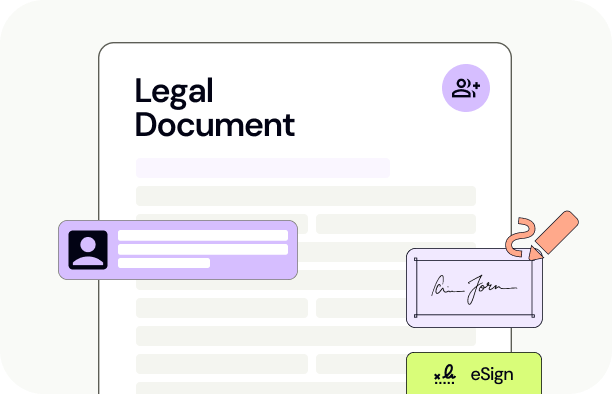Termination Letter (Redundancy)
A Termination Letter (Redundancy) is used to notify and terminate your employees' contract of employment due to redundancy.
Last updated February 26, 2025
Suitable for Australia


Browse our 500+ legal documents
Browse our 500+ legal documents
Manage documents, agreements and a lot more from one central place. Just log in and find everything ready to go.

Collaborate with e-Sign and Sharing
Collaborate with e-Sign and Sharing
Having access to your legal documents has never been easier. You can request e-signature, share the document and download for an efficient collaboration.

Instantly review any legal document
Instantly review any legal document
Upload your document, ask contract AI, and watch those burning questions transform into crystal-clear answers. Because brilliant decisions shouldn't keep you waiting.
How to create a legal document
- check_circle
Access the Document Library
- check_circle
Select the template that matches your needs
- check_circle
Customise by adding or removing clauses with assistance from Lawpath AI
- check_circle
Personalise with your headers, footers, logos, or additional text
- check_circle
Store all documents securely in your account for easy access
Frequently asked questions
Use this Termination Letter (Redundancy) if:
- You would like to terminate the employment of an employee;
- You would like to concisely explain to the employee why he/she has been dismissed; and
- You would like to have a record of the termination in the event that legal proceedings are initiated.
What does the Termination Letter (Redundancy) cover?
- Effective date
- Notice to the recipient that their position has become redundant; and
- Sets out the redundancy payment that will be made.
Other names for Termination Letter (Redundancy) include:
- Letter of Redundancy
- Letter of Notification of Redundancy
- Redundancy Letter
- Employee termination letter
Further information
View Sample Termination Letter (Redundancy)

The Legal Risk Score of a Termination Letter (Redundancy) Template is Medium
Our legal team have marked this document as low risk considering:
- The timing and method of the payments, including severance, leave entitlements, and final salary, are critical, and any delay or error in these payments could result in financial penalties or legal challenges.
- The emotional and reputational impact of a termination letter should not be underestimated, as it can affect the morale of both the departing employee and remaining staff, and potentially influence the public perception of the company if not handled with care.
- If not handled properly, redundancy can constitute a breach of the Fair Work Act.
Looking for more documents?
Employment Agreement (Casual)
This Employment Agreement (Casual) is suitable for casual employees in any industry. This agreement is essential when hiring new casual employees for your business.
Contractor Agreement (Individual)
The Contractor Agreement (Individual) allows you to hire a contractor that is an individual (ie. not a company).
Shareholders Agreement
A Shareholders Agreement allows you to clarify the relationship between shareholders of your company.
Full Time Employment Agreement
This Full Time Employment Agreement covers everything you need when hiring a new full time employee. It is applicable to any industry in Australia.
Consultancy Agreement (Pro-Supplier)
A Consultancy Agreement (Pro-Supplier) can be used if you provide consultancy services or engage consultancy services from another entity. This version of the Consultancy Agreement is drafted in favour of the supplier, from a commercial and legal perspective.
Website Terms and Conditions of Use (Goods)
This Website Terms And Conditions of Use (Goods) outlines the rules people must follow when using your website. It includes protection for your IP, disclaimers to limit your liability and makes you compliant with Australian law.
Contractor Agreement (Company)
A Contractor Agreement (Company) allows you to engage a contractor that is a company.
Internship Agreement
An Internship Agreement is used when hiring an unpaid intern for your business.
